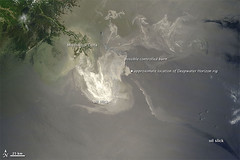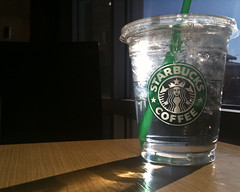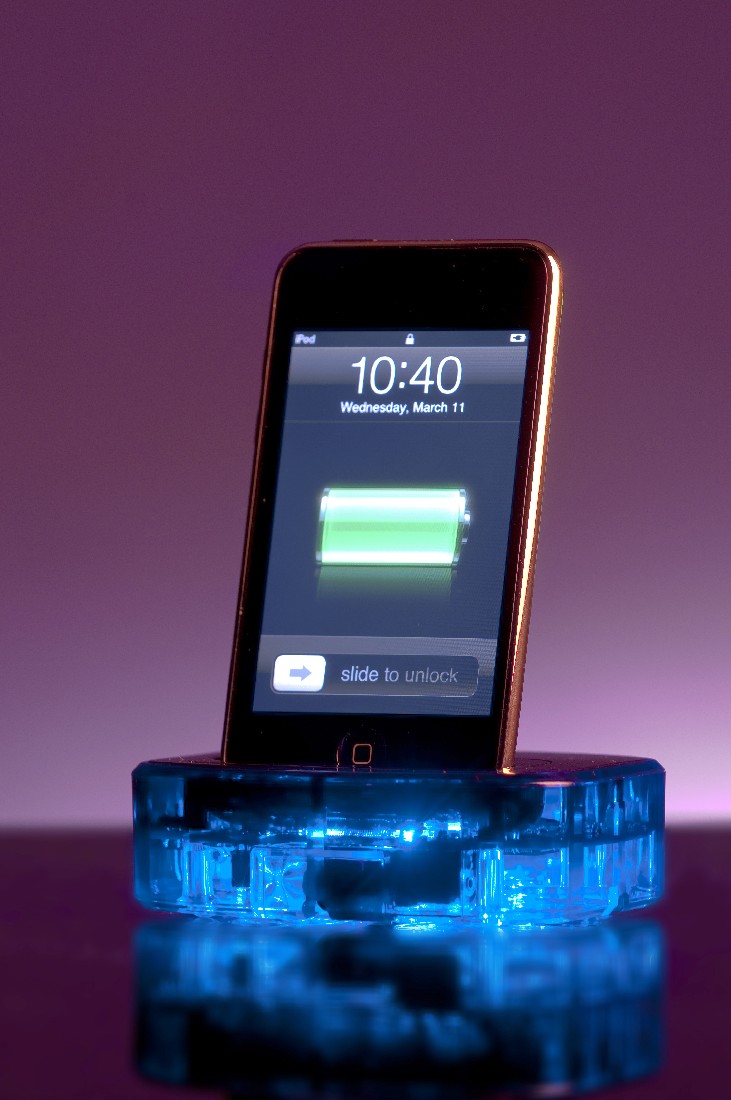
- Image by NASA Goddard Photo and Video via Flickr
We are all experiencing what will be one of the most tragic events in our lifetime. On April 20th an explosion rang out on the Deep Horizon, a BP oil rig that was positioned 52 miles southeast of Venice, LA. There were 126 people on board at the time. Sadly 11 people died and 7 were hurt. Two days later the oil rig sank and an oil slick was spotted over the ocean. At first the slick was believed to be residual after the rig had sunk but the world found out fast that this was not the case. About four days into the disaster it was clear to the Coast Guard that a well underneath the ocean was spewing out a great deal of oil. As a result, the response started picking up. By the 29th, the Secretary of the Department of Homeland Security had declared the oil spill as a crisis of “national significance” which allowed the government to aide in the blockage of the oil leaks and clean-up efforts. Chemicals were being dispersed from aircraft and boats which allowed the oil to break up easier. 33 miles of oil capturing booms and 100,000 gallons of dispersant had been used. Another resource they used was fire to burn the oil slicks before they reached the shore.
As May came around, Obama stated that the stoppage of the leaks would be difficult considering “the most advance technology available”. The issue with fixing the leaks is that everything has to be done by machine as humans are not able to travel to the depths in which they are drilling from (approx. 5,000 feet). On the 3rd BP announced that it would hold itself responsible for the damage the disaster created. They will end up paying not only for the future clean-up but also for the jobs and money lost from their negligence. A day later oil started reaching the shores of Louisiana. BP capped the smallest of the three leaks on the 5th and announced their plan to position a dome over the others. This dome would encase the leak and then funnel it up through hoses to ships. By the 8th it was clear that the dome would not work as BP did not anticipate the fullness that the reaction of water and gas fusing creating hydrate crystals made. The next day they decided to move to a plan that would clog the blowout preventer, which rest at the bottom of the ocean, with debris hoping that it would clog the well and not let oil out. May 12th, BP started lowering a smaller dome that used methanol to prevent hydrate buildup. The same day Obama created a plan to use $118 million towards the clean-up effort with the understanding that BP would pay most of it back. Two days later BP decided to put aside the dome and try to insert a tube to collect the oil from the leaking tube.
The tube was pretty sucessful at capturing the oil but as Obama explained, it would not be a permanent solution. On the 16th of May, the top-kill procedure was introduced in which BP would pump heavy fluid in order to stabilize the pressure in the well so that cement could later be pumped in to cap the well. On the 18th the National Oceanic and Atmospheric Agency closed more fishing grounds in what amounted to 19% of the gulf coast. By the 19th BP had expressed their pleasure with the performance of the tube insertion. Obama put together a commission on the 22nd with the objective to find the cause of the incident and recommend ways of preventing it in the future. The commission would report their findings after six months. The top-kill procedure was ready to commence on the 25th. BP had reported some success so far but is not confident that the mud is heavy enough to prevent to oil from flowing out before they can cap the well. Progress on the top-kill has been placed on pause a couple of times, insisted in order to do tests. They also tried a junk shot which entails shooting debris in the blowout preventer in order to clog it up. However today, BP announced that the top-kill procedure was not successful, that the pressure of the well was too high. They are continuing an initiative to drill a relief well near the existing leak in order to reduce the pressure where the leak is; however the relief well will not be ready until August. The next step is to install a Lower Marine Riser Package. This would be a cap over the existing blowout preventer but it would eliminate water which show not allow hydrate buildup. The cap would capture most of the oil but not all of it and would take a handful of days. If the LMRP would fail, they would try to replace the blowout preventer.
There is speculation that the blowout preventers had failed in this situation that may have been able to prevent the occurrence. What was rumored to have happened was that BP had decided to use sea water instead of heavier liquid in the drilling pipes from the well to the platform in order to use the heavier liquid elsewhere. This came after the fact that there had been some abnormal pressure reading coming from these pipes. Then on the day that BP management was celebrating the safety record on the platform, all hell broke loose. The crew saw the sea water rushing up the pipes as that meant oil was coming with it. At the same time there was a buildup of methane gas around the platform. Theory is that the methane ignited therefore engulfing the rig. The blowout preventer was supposed to stop the oil from coming back at the platform. It has been detailed that after the platform ignited and the crew was aware that oil was coming back up out of the well that employees were wary of manually engaging the emergency button as it had to be authorized by a specific crew member on the rig. There has also been some other fishy occurrences since like the hiring of 300-400 people by BP to clean up a specific beach before the president arrived to see it.
source: cnn


- Image by ashley_brown via Flickr
I recently bought two Starbucks 20-oz Venti To-Go Cold Cup Tumblers. I purchased one for that special someone and the other for myself. Honestly it was her idea to get the tumbler. I had seen them before and they had caught my eye but I didn’t see the need for an expensive yet sturdier cup. She expressed her interest in one and as I looked into it more, the cup became more appealing. The tumbler is not just a heavy plastic cup. It is a machine washable and reusable double walled cup that is very convenient. The double wall provides a no-sweat exterior. In my experience, when filled with chilled water, the exterior will fog on the outside forming a light layer of condensation but does not result in actual beads. The characteristics of the cup also keeps beverages cooler – meaning no more watered down chai lattes for me. Every time you use your tumbler for a drink at Starbucks you save ten cents.
These cups are very difficult to find. They are sold out online and you are lucky if you get your hands on them at your local Starbucks store. I was lucky in that she told me they were at my local Starbucks the day before and the barista was nice enough to call around in order to find two. This store sold through their venti cups in a day and had a few grande cups left when I stopped by. Your best bet is to try smaller stores which may not receive as much traffic.
Ironically one thing I miss is being able to chew or bite the plastic Starbucks straws. The straw that is included is really strong, and could hurt your teeth if you try to chew on it. The pipe contains a ridge at the bottom so the straw will not fall out. This ridge also makes holding the lid and straw more convenient while waiting for a beverage. Replacement or additional venti straws for the tumbler can be purchased online. The only other issue about the tumbler is that it is 20-oz whereas a normal venti cup is 24-oz. In my opinion you should save more money as you are provided less beverage.


- Image via Wikipedia
Reeling with excitement, I have no desire of falling asleep now. In 6 hours, Apple will release their new Apple tablet. I cant wait to hear about how Steve Jobs introduces this one. Supposedly a 10″ touch-screen tablet closely resembling a flattened first generation iPhone. It should have 3G connectivity, a front facing camera, and two dock connectors (for portrait or landscape positions). Hopefully it will have an OLED display.
It is said to be Steve Jobs’ most important product release yet. I can’t even imagine how it will surpass the iPhone. It will allow for downloads of book and most likely magazines and newspapers. You are said to interact with the tablet in a completely new way. I’m hoping it will be around $600. We shall see pretty soon.

This is one of the more exciting accessories I’ve seen for the iPhone. I’ve always wanted to control my electronics through my iPhone ever since my mom’s old PDA could (years ago). With ThinkFlood‘s RedEye unit and free app, you can control your infrared electronics from your iPhone. Back then, my mom’s PDA could only control a device with line of site, but the RedEye unit is controlled via wifi and therefore can be controlled in any direction, across the room, in another room, or outside the house as long as you can reach your wifi network. Just simply place the RedEye unit within range of your electronics. The great thing is you can control multiple units in multiple rooms or multiple people can control a single unit (which may be a bad thing :]). Another great thing is you have the ability to program your own remote. Which means you choose the buttons and functions of the remote control and can change it based on the different activities you want to perform. The RedEye and accompanying application seem like a set of very impressive tools for you universal remote control needs.
Right now while the RedEye is going through their beta process, ThinkFlood is offering each RedEye unit at cost $119 instead of the normal retail price of $149. This seems like an even better reason to jump on the bandwagon before they raise their price. It will be really interesting to see how well the unit works and I will follow up with what I think about the device and the software. I should have mine by the 16th. 🙂
ThinkFlood :: What is RedEye?.

Check out something ridiculously cool from the WWDC 2009 conference. There Apple had a semi-live updating board that would pulsate each time someone purchased an app. Developers called it the pulsating app store hyperwall, and pulsate it did. The idea that you can see all of these purchases happening in semi-real time in a graphical way is pretty neat. Plus I’m sure if you did some calculations based on the board you could tell the number of downloads (purchases) a day and the popularity of the different apps.
AppleInsider | Apple stuns WWDC crowd with pulsating App Store hyperwall.
To get a better look at the different applications on the wall, someone has made a photosynthesis. It’s a collection of over 200 close-up pictures stitched together to make one high quality portrait.
What you’re looking at:
Over 3,000 apps – and growing – are downloaded every minute from the App Store. This is a live feed showing the activity of 20,000 popular apps currently on the store. Every time a customer downloads an app, its icon lights up (5-min. delay).
How we made it:
This hyperwall was built using the latest in Apple technology. It’s powered by 20 Mac Pro towers running Mac OSX Snow Leopard. It was programmed in Quartz Composer using Open L APIs. And it’s shown on 20 synchronized 30-inch Apple Cinema HD Displays.




